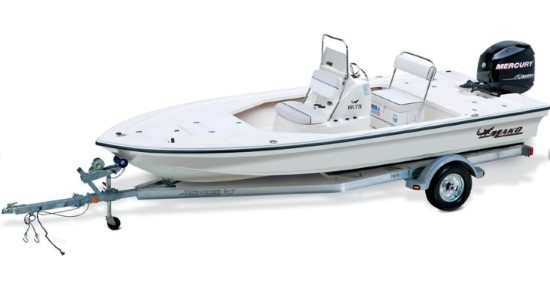12 Important Things to Look for in a Bay or Flats Boat
An angler who invests in a bay or flats boat has already made a conscious decision about how he wants to use his boat. A flats model is for fishing the shallows. A bay boat is a little bit more of a hybrid, still designed and equipped to work the shallows, but able to traverse larger, deeper bodies of water and still get home in one piece. Because these two models share many attributes, let’s take a look at 12 features that are most important in boats of these types.
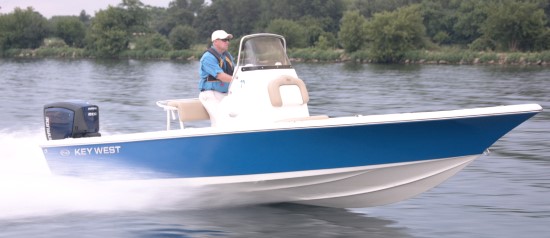
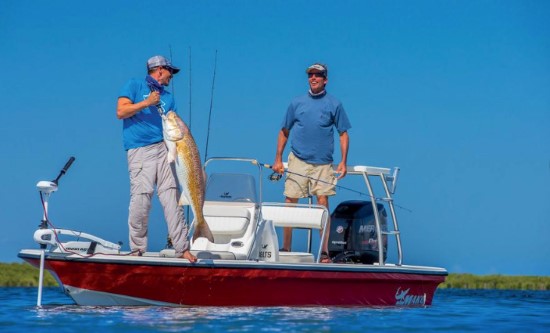
1. Boat Length
A typical flats boat will range in size from 14’ (4.3 m) to 18’ (5.5 m). Anything bigger than that could be tough to move with a push pole. Because it’s designed to handle bigger water in open bays, a flats boat is more likely 20’ (6.1 m) to 24’ (7.3 m).
Remember that boats 20’ and under with a motor over 2-hp must float level if swamped to meet USCG requirements. There are no USCG flotation requirements for boats over 20’.
Our recommendation is to buy the boat that was designed for the body of water on which you plan to use your boat. Do not buy a flats or bay boat because they are relatively inexpensive and use it on a larger body of water than those for which they were intended. That is how boaters get into trouble.
2. Draft
Both designs are powered by a single outboard that can be trimmed out when running in shallow water. To keep from needing a trolling motor with an excessively long shaft, a bay boat should have a maximum draft of 1’3” (38.1 cm) or less and maximum draft for a flats design is usually less than 1’ (30.5 cm).
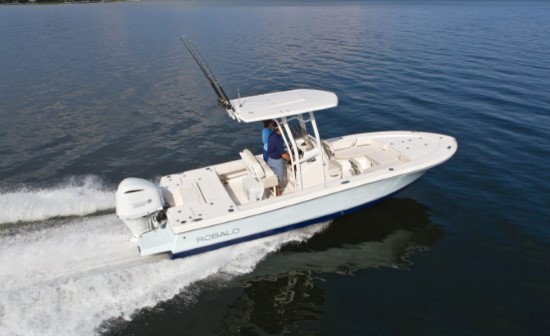
3. Bottom Design
Bay and flats boats are available in semi-V and tunnel designs, among others. The tunnel can be a full catamaran or a shallow tunnel just ahead of the outboard motor’s gearcase that lets it run at a higher position and still get cooling water. In a V-bottom design, a bay boat is going to have a little sharper V than a flats design, typically with a deadrise that measures 15 to 16 degrees at the stern. Expect a flats boat to have a deadrise measurement at the stern of 11 to 13 degrees.
Deadrise affects speed, fuel efficiency, draft, comfort, and stability, among other things. The flatter the bottom, the faster the boat will go with the same power. A higher angle of deadrise will make the boat more comfortable at speed in a chop.
Beyond the overall shape of the hull, most boats will have a pad at the stern. A potential flats-boat buyer wants to make sure that the chines and hullsides are designed to minimize slap when waves hit them while the boat is being poled – critical for sneaking up on game fish.
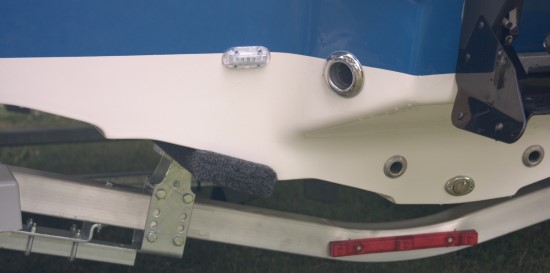
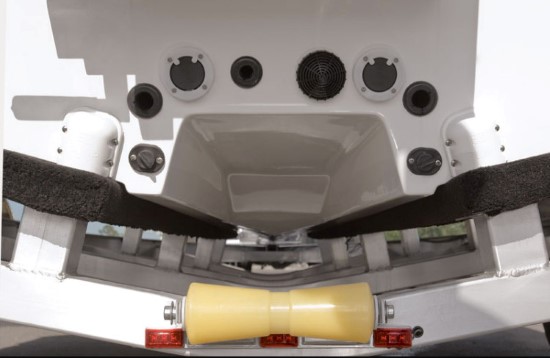
4. Jack Plate
Applicable more for a flats boat than a bay model, a jack plate can prove invaluable when an owner wants to venture into extra-skinny water. A manual plate might seem like a good way to save money, but once a captain uses a power model that lifts the motor with the flick of a switch, the extra investment becomes worth it.
Jack plates are almost always optional equipment, but a few builders have them as standard.
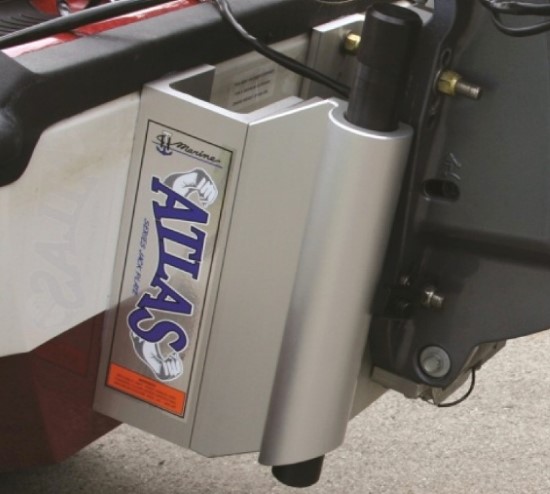
5. Outboard Power
As with any style of boat, we would never recommend that a buyer opt for the smallest motor available with a given model. For example, the Mako 18 LTS is available with a 60-hp Mercury FourStroke outboard, but we think it would be underpowered when the boat is loaded with equipment, fluids and a couple of portly anglers. We would recommend a 90-hp outboard. It’s not the top power available, but it would be enough to keep the boat moving in a head sea, even when she’s loaded down.
The Key West 210 Bay Reef is available with a single outboard ranging from 150 to 225 hp. Here, we think that a 150-hp engine should be both sufficient and safe, driving the boat somewhere in the mid-40-mph range.
Consumer Caveat. Over the years BoatTEST captains have scrubbed five tests of bay boats and flats boats. The reason for all the scrubs was the same – the boats were unsafe because they were overpowered – and all were powered at the max USCG ratings on the metal plate. In one case, our Captain was thrown out of the boat. Flats and bay boats can be dangerous if driven too fast for the conditions. Small waves can have a disastrous effect on a small boat with a flattish bottom driven too fast.
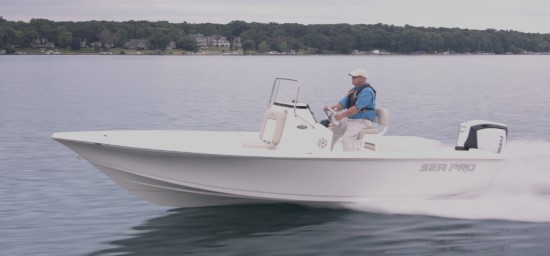
6. Casting Decks
Taking a look at the fishing attributes of a flats or bay model, both styles should have spacious elevated casting decks forward and aft. These decks should be covered in nonskid. An angler should be able to feel the outside edge of the walking surface with his toe.
There is no industry standard as to what the surface area must be for either bow or stern platforms so consumers must get on the boat and see which boat fits best. Because of the weight of the outboard motor, it is usually best if only one angler works from the aft deck.
Stability. When a heavy angler walks to the stern quarter of a casting deck, how much does the boat incline? How much freeboard is left? In some cases, particularly on flats boats, there are only a few inches of freeboard left in this scenario. Check it out yourself, don’t assume the boat is as stable or has as much freeboard as you think it should.
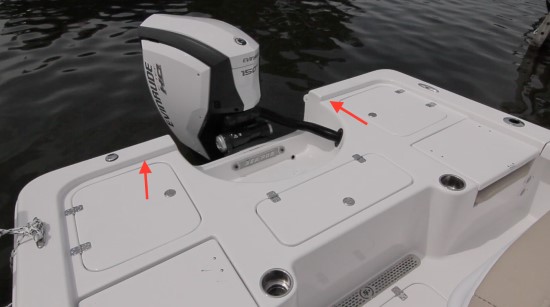
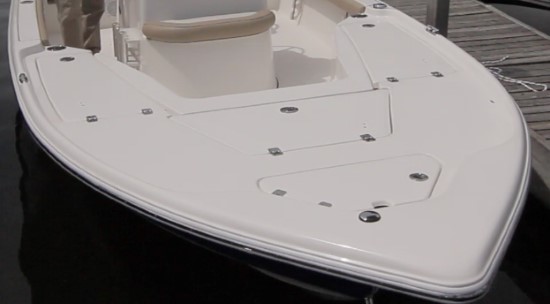
7. Seating Is Important
Because it’s rare that a flats or bay boat won’t also see some time doing family play duty, many manufacturers these days are adding a few comfort items. Many boats come with fold-away seats in the stern and a padded bench on the front of the console. Some even have back rests that can be inserted in the port and starboard bow deck sections. Others have optional sunpads that can snap in place on the forward or aft casting decks.
And let’s not forget the captain and a companion. They will usually travel standing up supported by a leaning post. But some boats have regular seats. This is an important distinction and is one of the areas where brands greatly diverge.
Consumer Caveat. We have seen many flats boats and skiffs that simply have a cushion on a cooler for the helm seat. A variation of this is to have a cushion on a molded in fiberglass box at the helm. Both of these arrangements have no back rest. The result is that if the boat accelerates too fast, the driver or companion can fall backward, lose control of the boat and become injured. This sort of design is simply unsafe and should only be used with low-hp outboard engines, if at all.
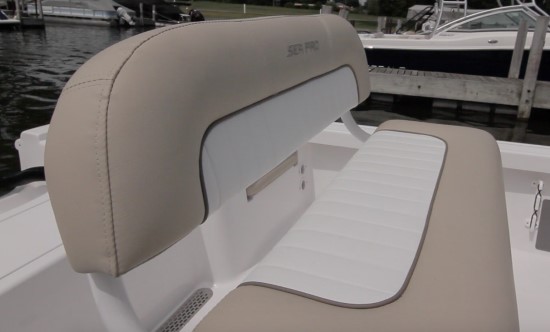
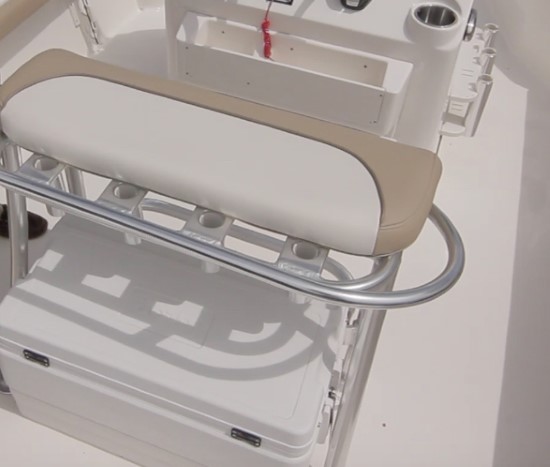
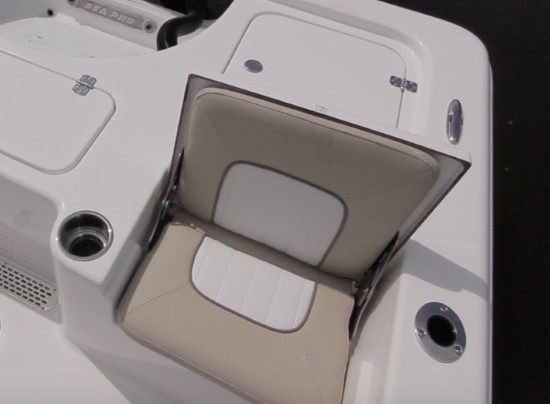
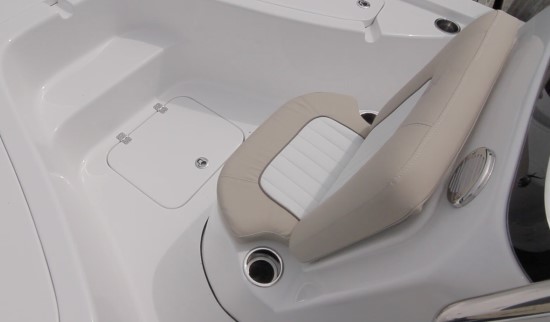
8. Poling Platform
Once a flats boat arrives in the shallows, it’s time to go into stealth mode and that means poling. A poling platform above the outboard motor is a must for serious bonefishing. It gives the person standing on it a much better vantage point for spotting fish.
Relatively few bay boats are rigged with a poling platform, so anglers that want a versatile bay boat that can also get into really skinny water, must do their research to find them – or, install them in the aftermarket.
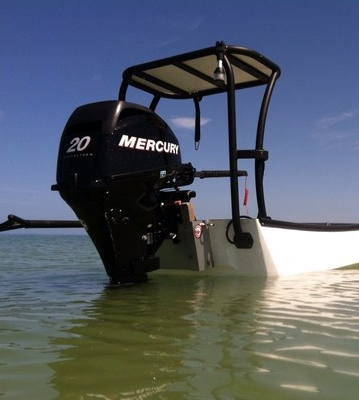
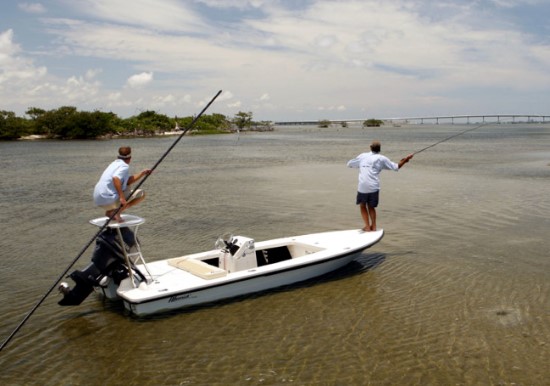
9. Livewell
Ask any guide and he’ll say that a bay or flats boat must have a livewell. Look for one that’s finished in blue, has rounded corners and an aeration system to keep the bait healthy. The latest live wells have full column aeration. Live wells should drain overboard or have diaphragm pumps to pump out the containers.
Make sure the livewell is large enough. All boats in class have them, but some are small. Small live wells can cramp serious fishing.
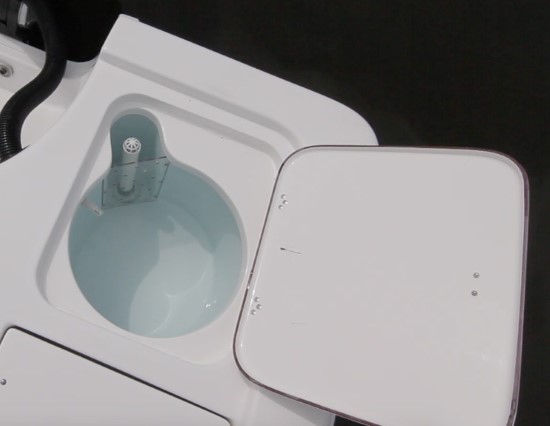
10. Rod Storage
Anglers who like to fish the shallows often prefer to do so with light tackle including fly rods. They can get up to 9’ (2.7 m) or 10’ (3.05 m) long so finding a place to stash them on an 18’ (5.5 m)-long boat can be challenging. Most bay and flats models will have locking stowage for shorter rods in the compartments in the forward casting deck and racks for longer gear outboard under the gunwales. We have also seen rod holders on the sides of consoles and, of course, in the decks.
In any case, before writing a check for a new boat, make sure the gear that will be used will fit in the lockable stowage.
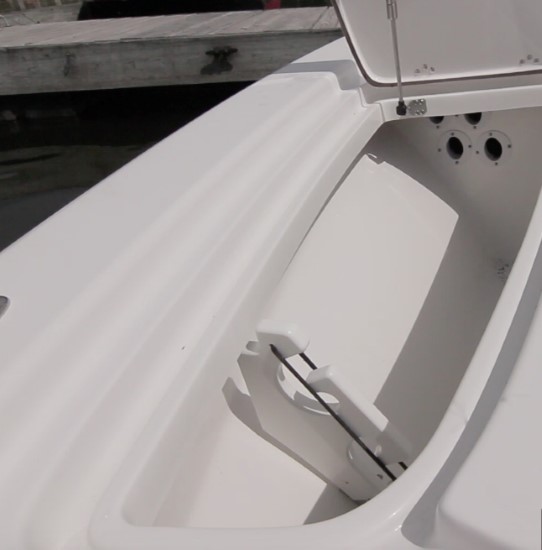
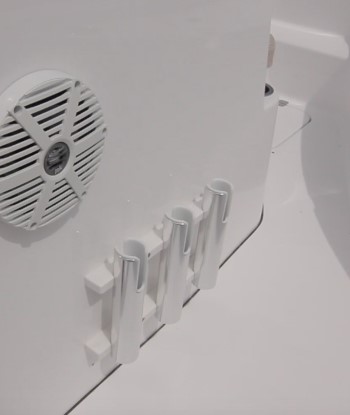
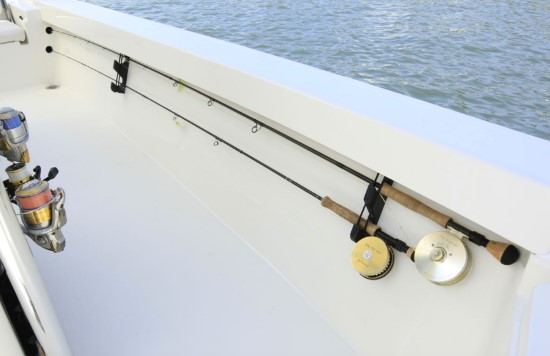
11. Self-Bailing
A boat with low freeboard can take on water pretty quickly when the wind picks up. That’s why any flats or bay boat must have a self-bailing cockpit. “Self-bailing” means that the bottom of the cockpit deck is above the waterline. The trouble is that the decks of flats boats and some bay boats are so low that they can’t gravity feed overboard. They will drain into the bilge, which will then need to be pumped out.
Draining into the bilge is problematic for several reasons. First, fish guts, scales and other debris gets washed into the bilge where it rots, smells and can gum-up the bilge-pump float switch. Second, the boat is reliant on a working battery and bilge pump. A battery will operate only so long on a charge before it dies. Boats left unattended eventually become swamped with rainwater.
Protective plates over cockpit drains are not recommended because they keep out more water than they let in. Just a couple of cross members in the drain will keep out most things.
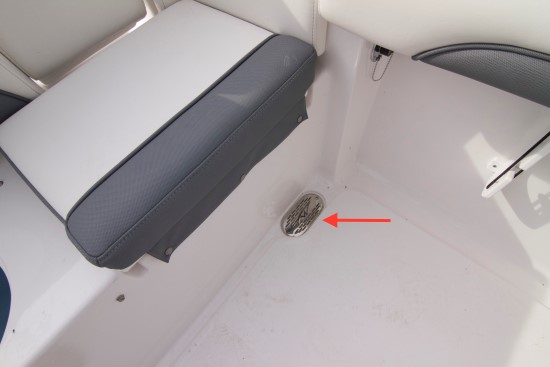
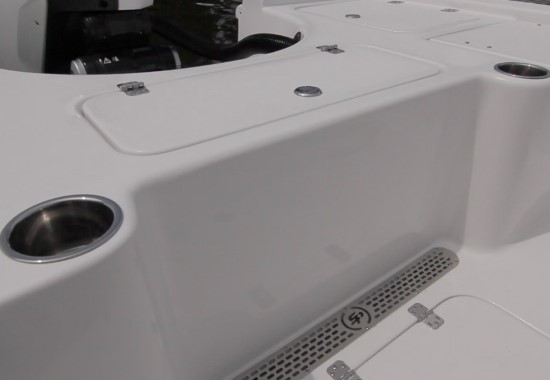
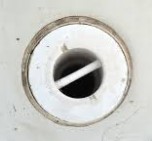
12. The Warranty
Virtually all builders say they have the best warranty, but in fact, they vary greatly, as does the ease with which consumers can make legitimate claims. It is no surprise that small operations are the most likely to be hard-pressed to fulfill a warranty claim. Other builders warranty the hull only, or have very specific lists of what they cover.
Check the fine print. For example, for many years one of the biggest problems in class was encapsulated plywood which was guaranteed not to rot. It didn’t rot, but it often soaked up water and became soft and the deck became soft, as well. That wasn’t covered in the warranty. This problem has largely been eliminated because most builders now use all-composite materials for their decks and substructures.
Every once in a while, even the best builders get a bad batch of resin or a boat slips out without proper QC. When that happens, the unlucky consumer needs a dealer and builder who will man-up and make good on their promise. Our experience is that the brand names are most likely to honor warranty claims.
FYI – companies that have worthless warranties go out of business.
